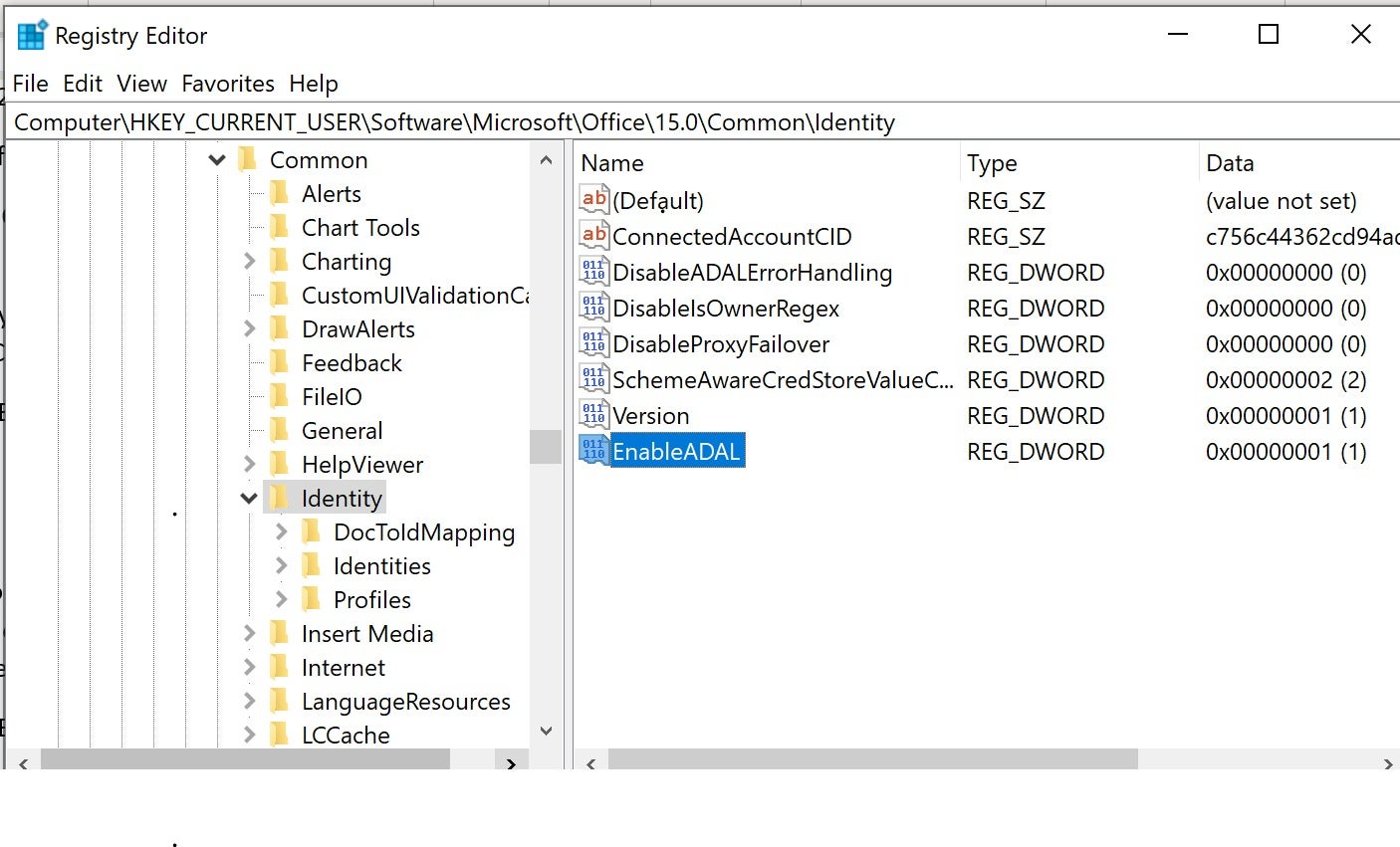

- Outlook modern authentication registry how to#
- Outlook modern authentication registry password#
- Outlook modern authentication registry windows#

Click on Client App and select everything listed used “Legacy Authentication Clients” and exclude “SMTP, POP, IMAP” and click Apply. Filter the log for Legacy Authentication Use.(Note: The typical use of legacy protocol is Scan to Email from an office scanner) The log entry will show which account and what protocol was used. This will now display the last 7 days of logs where Legacy Protocols (SMTP, POP, IMAP) were used if any.Select IMAP, POP, and SMTP then click Apply.Click the Date filter then select 7 Days.In the Search bar, search and select Azure Active Directory.(Note: This is the same Administrator Account as Office 365) Login to Azure AD Portal with an Administrator Account.Note: Certain 3rd Party Systems like CCH, SuiteFiles and OnePractice are still using Basic Authentication, if you notice these accounts in your logs take note of the account in use to create an exception.
Outlook modern authentication registry how to#
The following guide will show you how to identify, use, and plan for the changes required.įailed login attempts from strange locations/IPs in the logs would indicate ongoing brute force and spray attacks against the Office 365 tenant. Identifying Use of Basic & Legacy Authentication (See instructions below on Dealing with Exceptions)

In this instance, there will be no option but to enable basic authentication on a per user/account basis. Some 3rd Party Integrations still require basic authentication as they are still working on their migrations to Modern Authentication.
Outlook modern authentication registry windows#
For example, Outlook clients can default to Basic Authentication by modifying registry on Windows machines. Older protocols like Exchange ActiveSync, EWS and MAPI can also still be used with basic authentication overriding MFA/Modern Authentication.
Outlook modern authentication registry password#
More than 99 percent of password spray attacks use legacy authentication protocols.…The numbers on legacy authentication from an analysis of Azure Active Directory (Azure AD) traffic are stark: The reason behind this is legacy authentication protocols like POP, SMTP, IMAP, and MAPI cannot enforce MFA making them preferred entry points for adversaries attacking your organization… Modern Authentication secures Office 365 resources using multi-factor authentication, certificate-based authentication, and SAML-based logins (such as Federation), for a true single sign-on experience.įor MFA to be effective, you will need to block basic & legacy authentication. To address the common security risks and user experience associated with Office 365 deployments, Microsoft introduced the Active Directory Authentication Library (ADAL) for Office 365 client applications, referred to as Modern Authentication. It has proven ineffective and is not recommended in modern IT environments especially when authentication is exposed to the internet as is the case for Office 365. Basic Authentication is unable to enforce MFA and is superseded by Modern Authentication.īasic & legacy authentication mechanisms that rely solely on username and password. Basic Authentication relies on sending usernames and passwords - often stored on or saved to the device - with every request, increasing risk of attackers capturing users’ credentials, particularly if not TLS protected. Microsoft is planning the deprecation of Basic Authentication for multiple protocols prior to its removal (Date TBC by Microsoft).


 0 kommentar(er)
0 kommentar(er)
